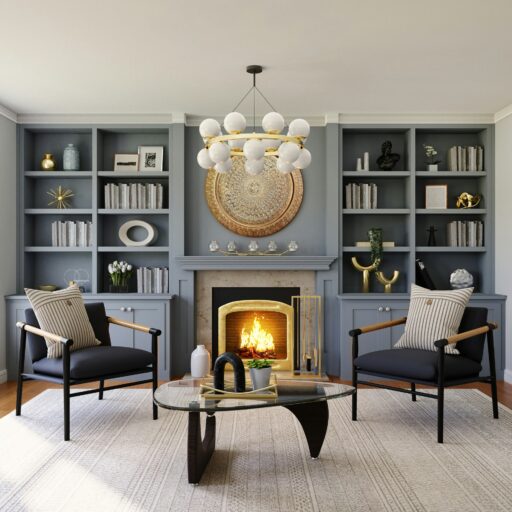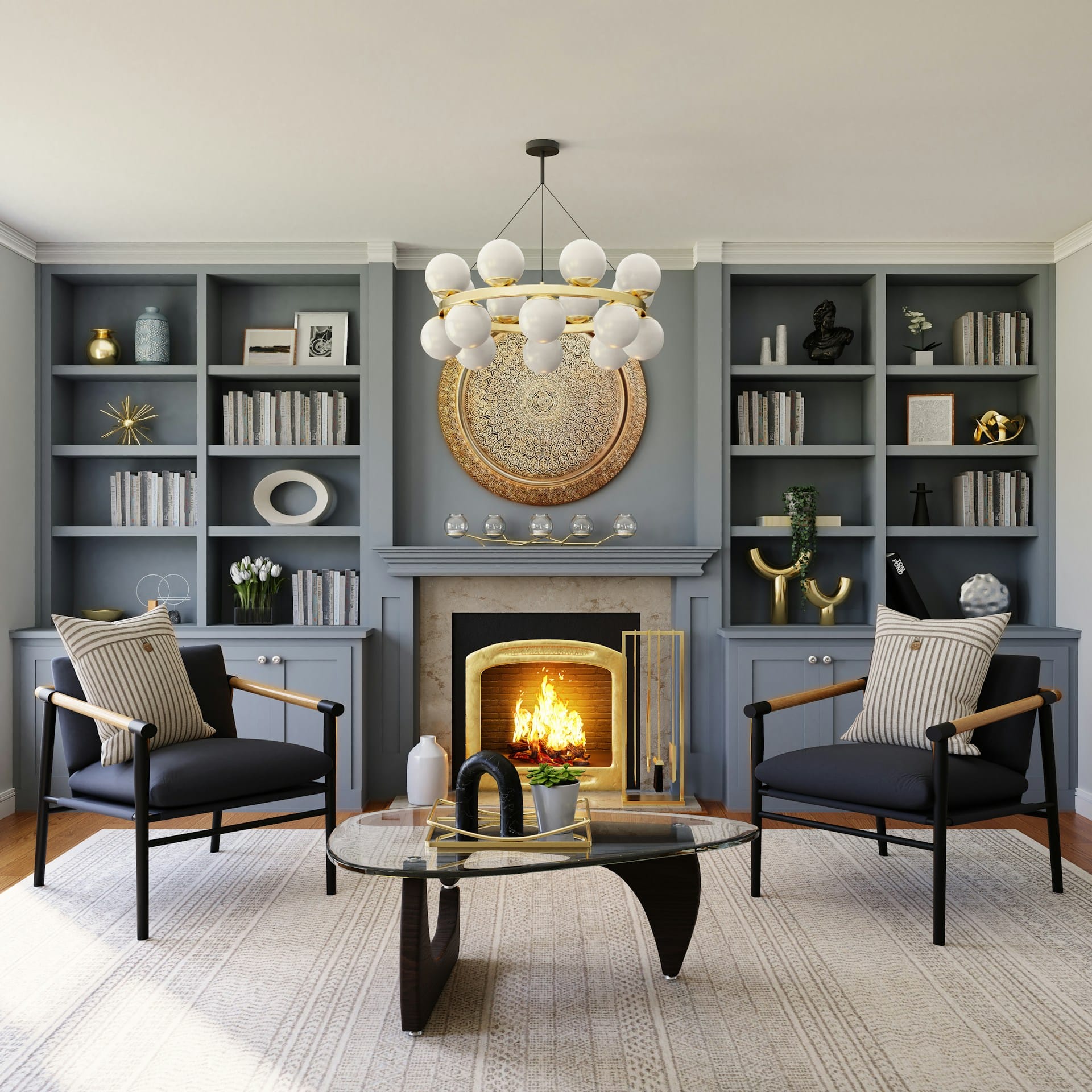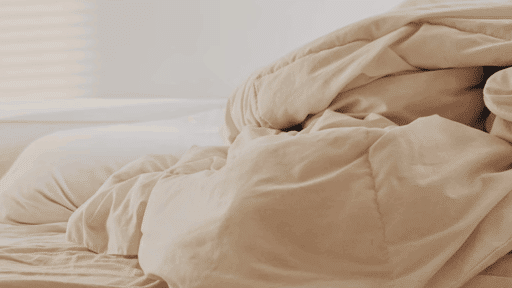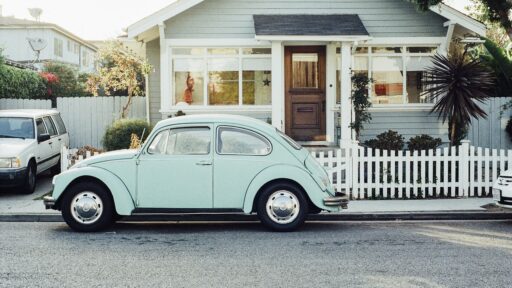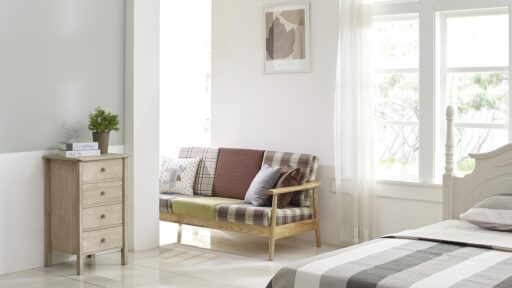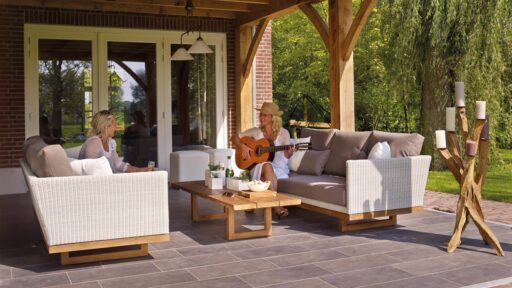Minimalism has officially worn out its welcome. It had a good run with its beige throws, single fiddle leaf fig trees, and endless blank space trying to pass as sophistication. But the cultural pendulum is swinging, and it’s not leaning toward another quiet whisper. It’s turning up the volume. Your home should feel like someone actually lives there—someone interesting. And not the kind of “interesting” that looks like an art gallery curated by someone terrified of color. We’re talking layered rugs, wall-to-wall books, bold lighting, mismatched chairs, and unapologetically lived-in spaces.
Maximalism isn’t just about more stuff. It’s about more personality, more story, more depth. You don’t need to live in a Victorian mansion or have a Parisian flea market budget to pull this off. You just need to stop editing yourself out of your own house. No more sterile countertops and museum-like silence. It’s time to let your home feel like home again.
Goodbye Empty Space, Hello Actual Living
Blank walls aren’t peaceful. They’re boring. Minimalist design tricked a whole generation into thinking white equals calm, and that having only three objects on a shelf was some kind of emotional maturity. In reality, most people just end up stressed about keeping things spotless. A space stripped of character can start to feel like you’re trying too hard not to exist inside it.
Maximalism flips that script. It welcomes life. Not chaos—there’s still a difference—but life. Let your books pile up. Hang art in clusters instead of leaving one lonely frame floating in the middle of a ten-foot wall. Light a candle even if you’re just eating leftovers. Use that floral bowl you thrifted instead of saving it for someday. The idea isn’t to clutter your space with junk; it’s to build a room that matches your personality instead of muting it. If you’ve got great taste and a story to tell, why hide it in storage bins and minimalist shelving units?
Color Isn’t Loud—It’s Honest
White walls had their time in the sun, but let’s stop pretending they’re the answer to everything. There’s nothing relaxing about living inside a blank canvas. Color adds movement. Energy. Warmth. And contrary to what all those Scandinavian Pinterest boards tried to sell you, bold color doesn’t automatically mean chaos. It just means you’re not afraid to be seen.
Start small if you’re nervous. Paint the back of your bookshelves. Switch out your beige curtains for a rich mustard or deep rust. Add a jewel-toned armchair. Go for something with velvet. Nothing sucks the life out of a space faster than playing it too safe. You can have grounding neutrals and still bring the heat. Layering tones and textures is what makes maximalism interesting—it’s not just a visual explosion, it’s a feeling. That moody green hallway or deep red bathroom might be the boldest, smartest choice you ever make for your house.
And let’s talk about the walls. Maximalism loves them. Fill them. Gallery walls aren’t going anywhere, but you don’t need to follow the grid layout or match your frames. Finding floral art prints for sale online that match your aesthetic is easier than you might think—and they’re an easy way to inject instant charm. Don’t overthink it. Art doesn’t have to be expensive or precious to be meaningful. The point is to make your space feel collected, not catalogued.
Mixing Old and New Isn’t Trendy—It’s Just Good Taste
Here’s where people get stuck. They think maximalism means spending a fortune on antiques or hauling back armfuls of tchotchkes every weekend. Not true. The secret is in contrast. That modern boucle sofa looks better when it’s next to a scratched-up vintage coffee table. That mass-market sideboard becomes way more interesting when there’s an ornate, oil-painted portrait hanging over it.
You don’t have to live in an 1800s townhouse to mix styles well. You just have to stop worrying whether things “go together” in the traditional sense. Pair that sleek metal lamp with a floral lampshade. Stack linen-bound books under a ceramic bust. Let your grandfather’s heavy wood dining table sit under a wild contemporary chandelier. These layers tell a story, and your home becomes richer because of it.
This also means letting go of the fear that your house should look like one thing. Trends are loud right now, and you’ll see terms like “eclectic farmhouse” or “Parisian modern” flying around like labels at a clearance sale. You don’t need to adopt an aesthetic like it’s a new identity. Just pick pieces that speak to you. They’ll find a way to make sense together, and when they don’t, that’s where the magic happens.
Stuff Isn’t Bad—We Just Got Weird About It
We’ve spent years trying to declutter our way to some sort of life clarity, and in the process, we lost the plot. Having things doesn’t mean you’re emotionally broken or clinging to the past. It means you care about stuff. Sentimental, beautiful, odd, excessive stuff. Humans are collectors by nature. We pick things up along the way—books, memories, ugly souvenirs we secretly love—and those things remind us who we are.
So lean into it. Keep the vintage candle holder from that tiny shop you visited once and can’t quite remember where. Frame your kid’s messy art. Let your kitchen feel full. Hang plates. Put out weird vases you got as gifts. It’s okay. You’re not auditioning for a magazine shoot. Your home isn’t a brand; it’s a space that holds your life.
Maximalism says yes to that. It invites all of it in. The trick is to style it intentionally, not hoard it out of guilt. Edit when you want, not because a trend told you to. Your clutter is only clutter if it’s unresolved. Once it’s styled, it’s texture.
Your Home, But Louder
There’s something refreshing about walking into a space that doesn’t feel like it’s trying to please anyone. That’s what maximalism gets right. It doesn’t care if everything matches, if you broke the “rule of thirds,” or if you hung your art a little too high. It cares that you tried, that you cared, that your fingerprints are all over the place.
There’s freedom in letting your home reflect your quirks. Those stacks of cookbooks you’ll never finish? Leave them out. That velvet footstool in lime green? Put it right in the middle of the room. Those chunky beaded curtains you swore you’d never use again? Try them in the doorway to the laundry room and see what happens.
When you stop aiming for perfection, you get something way better: authenticity. A space that tells the truth. A home that holds memories, not just trends.
Where We Land
Minimalism had its clean lines and clear surfaces, but maximalism has heart. It’s messy in the best way, layered, lived-in, and full of soul. If your home’s been feeling a little flat or too “put together,” maybe it’s time to stop stripping things down and start letting them in. You don’t need to follow rules. You don’t need a formula. You just need to give yourself permission to go big again.

